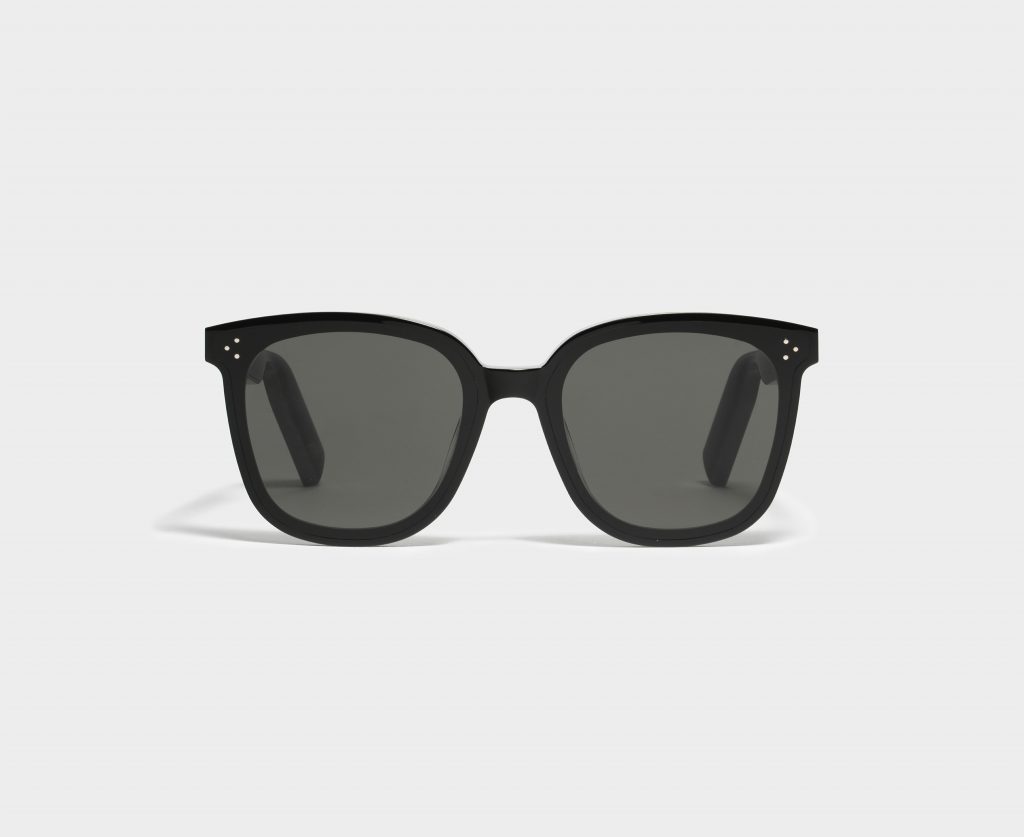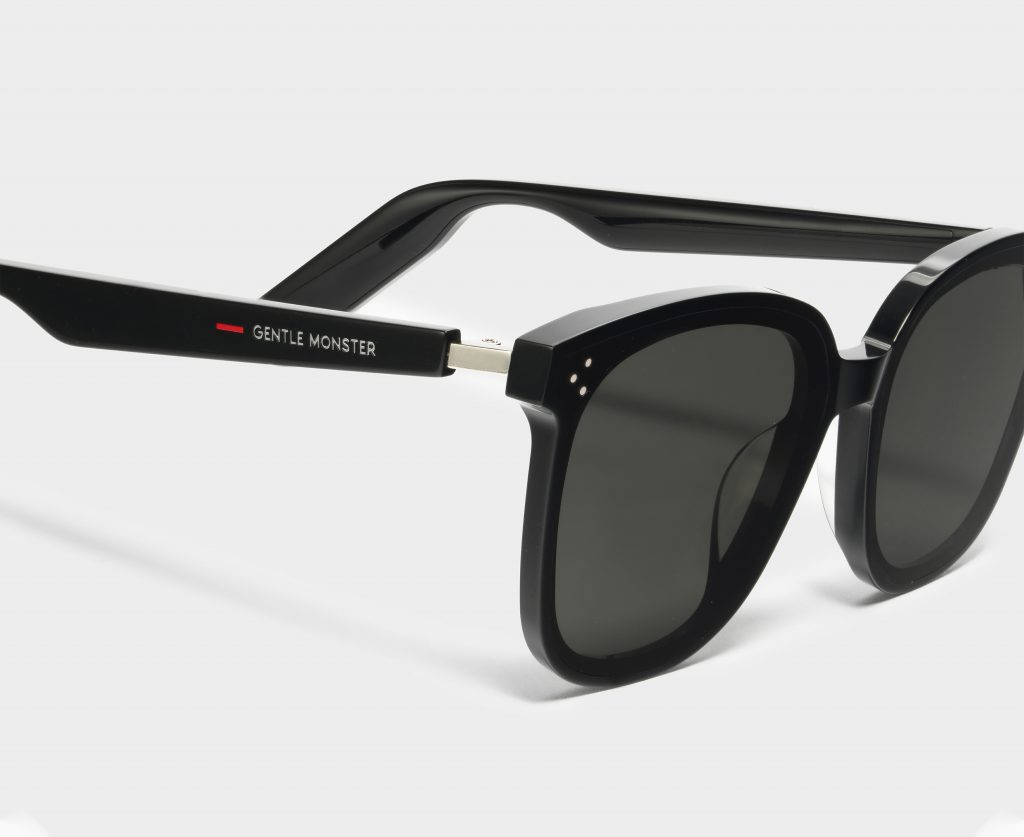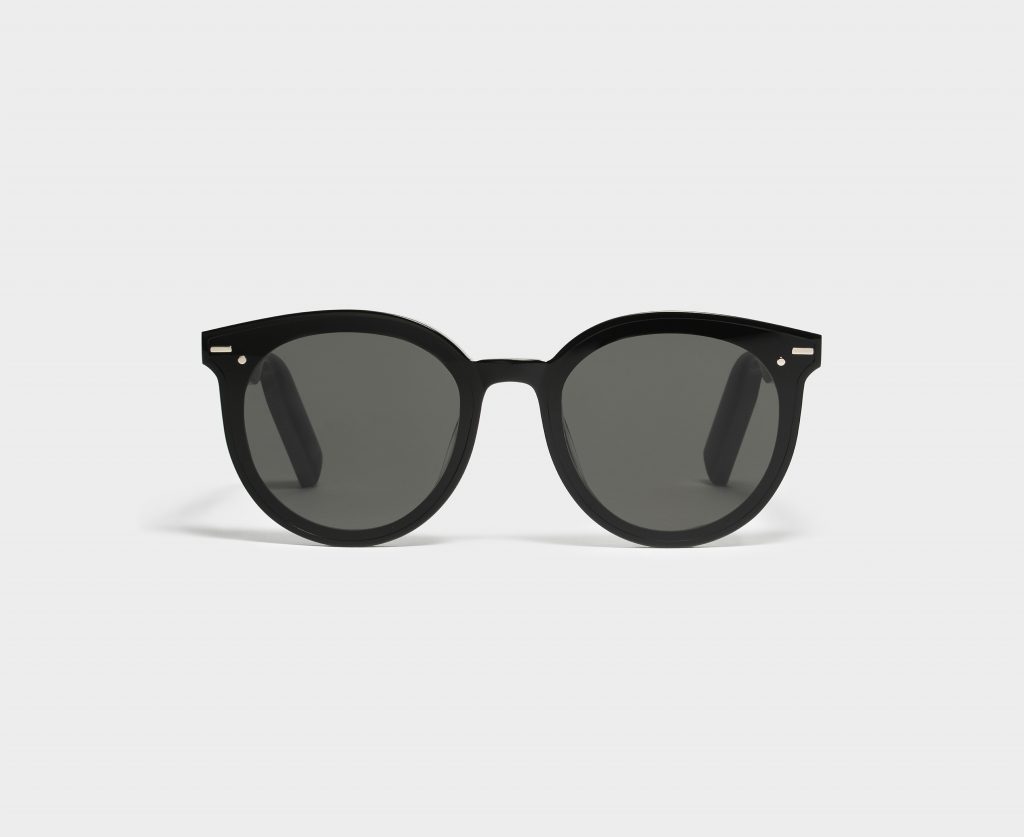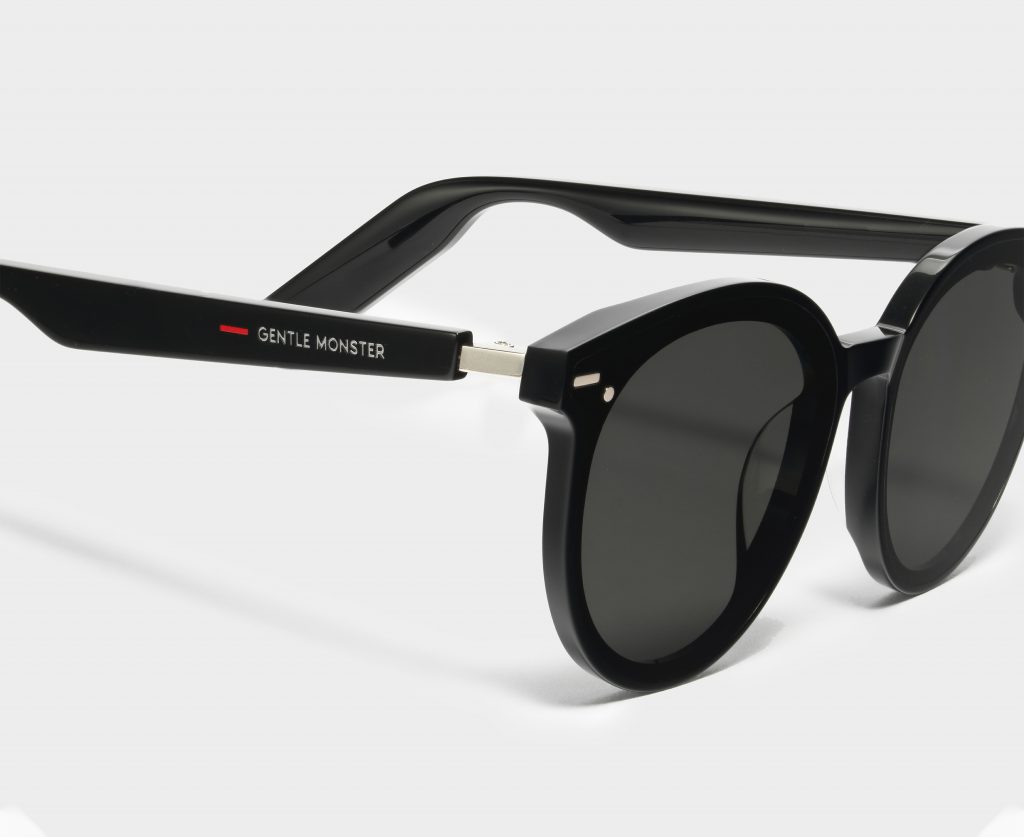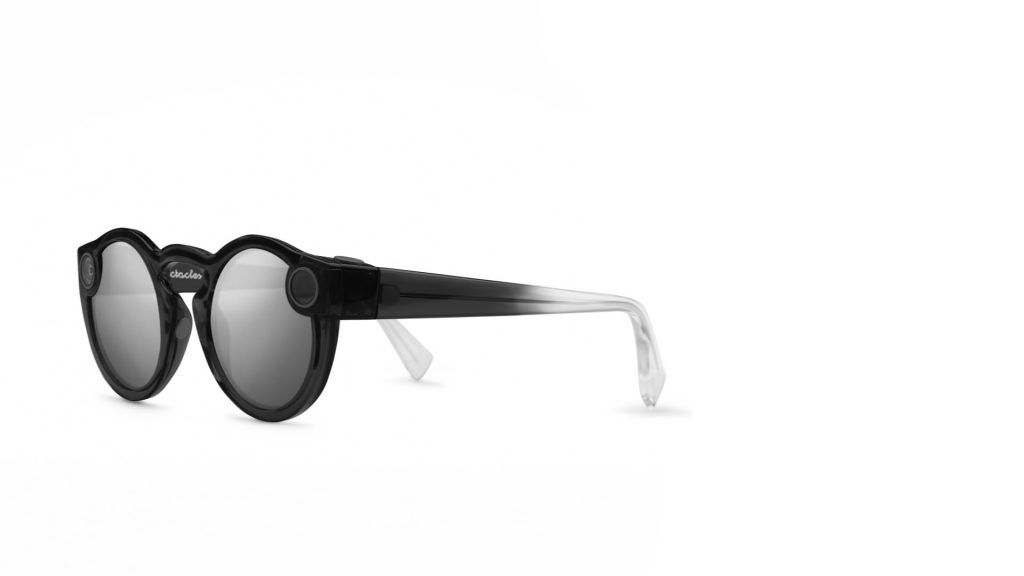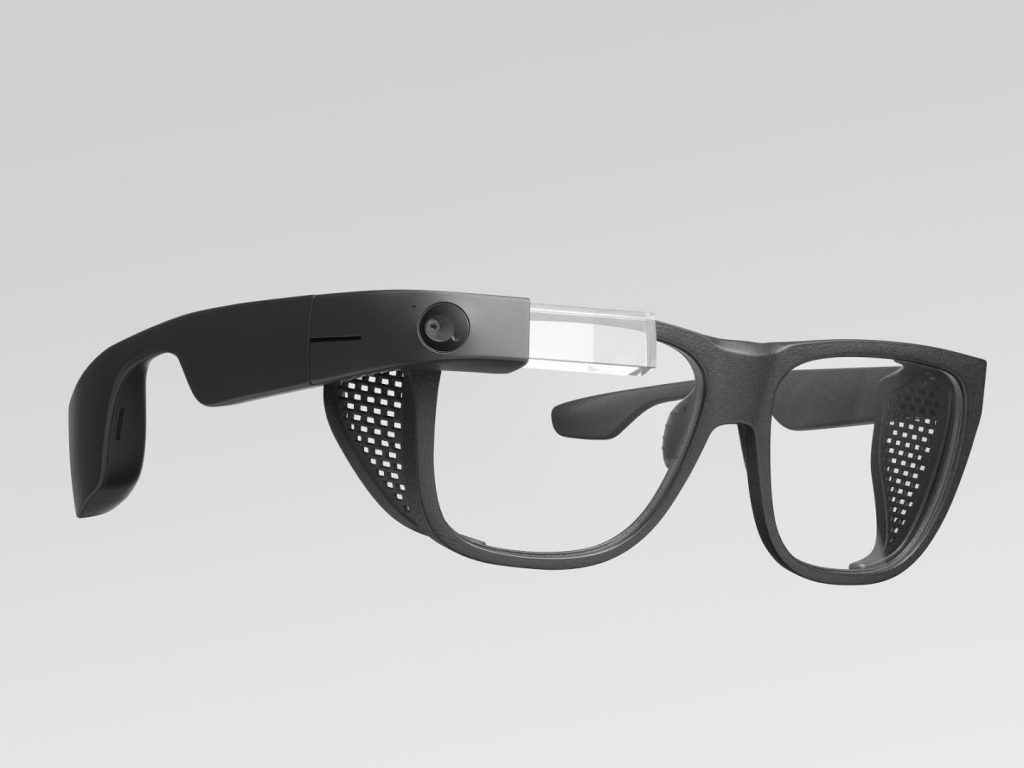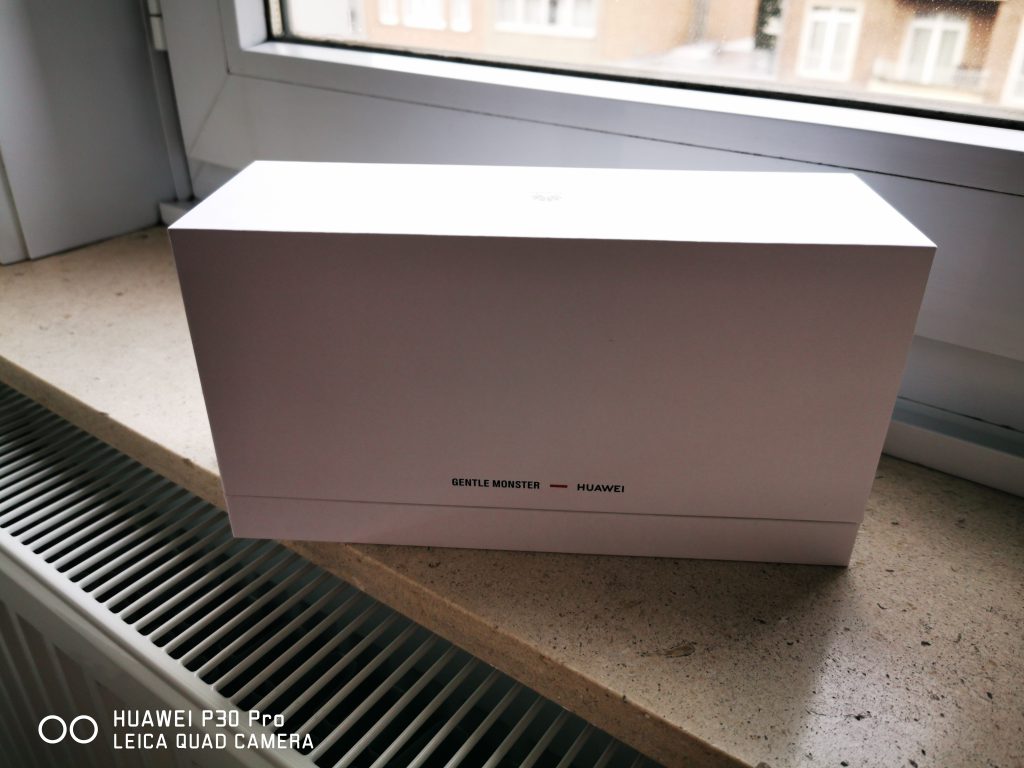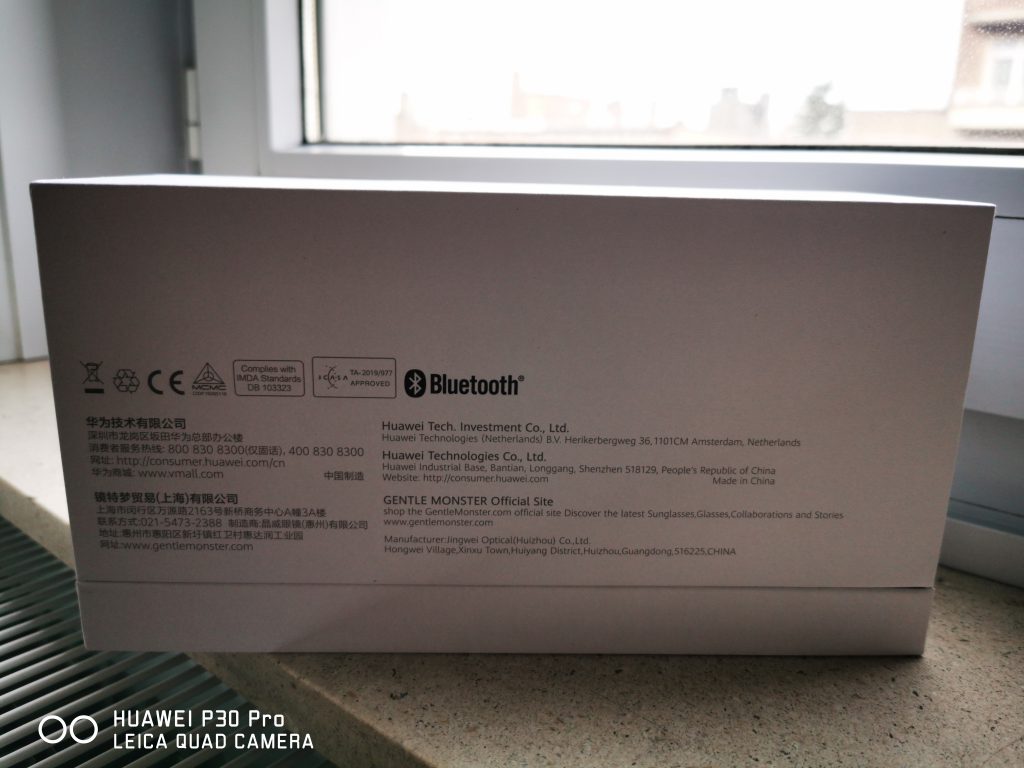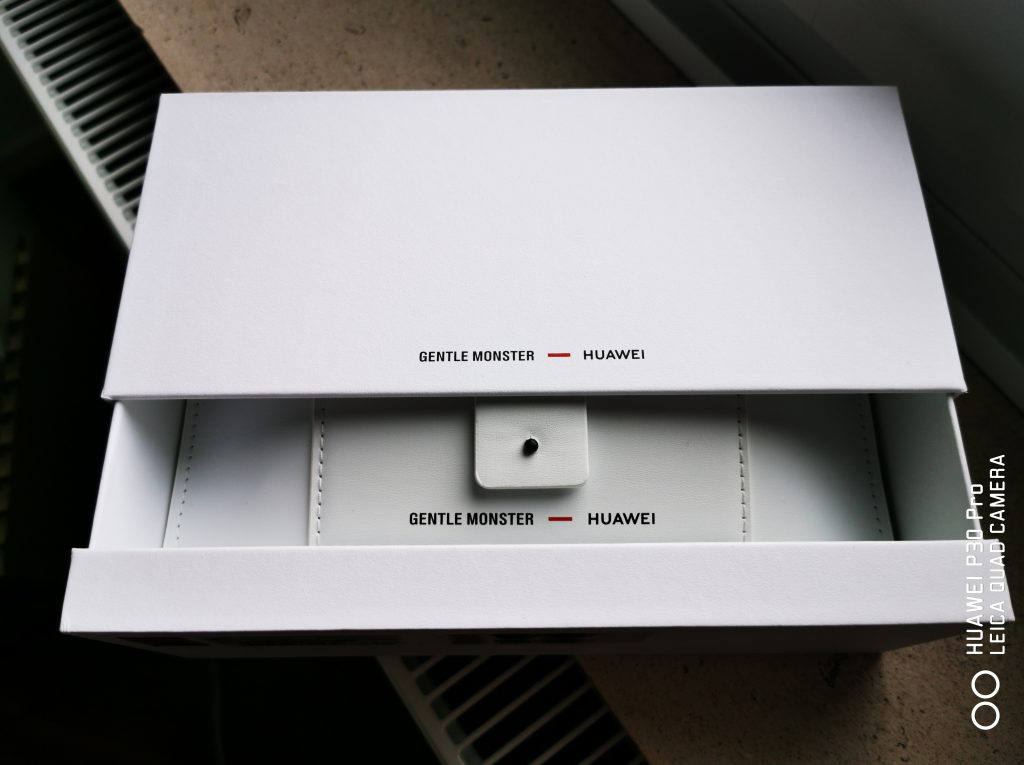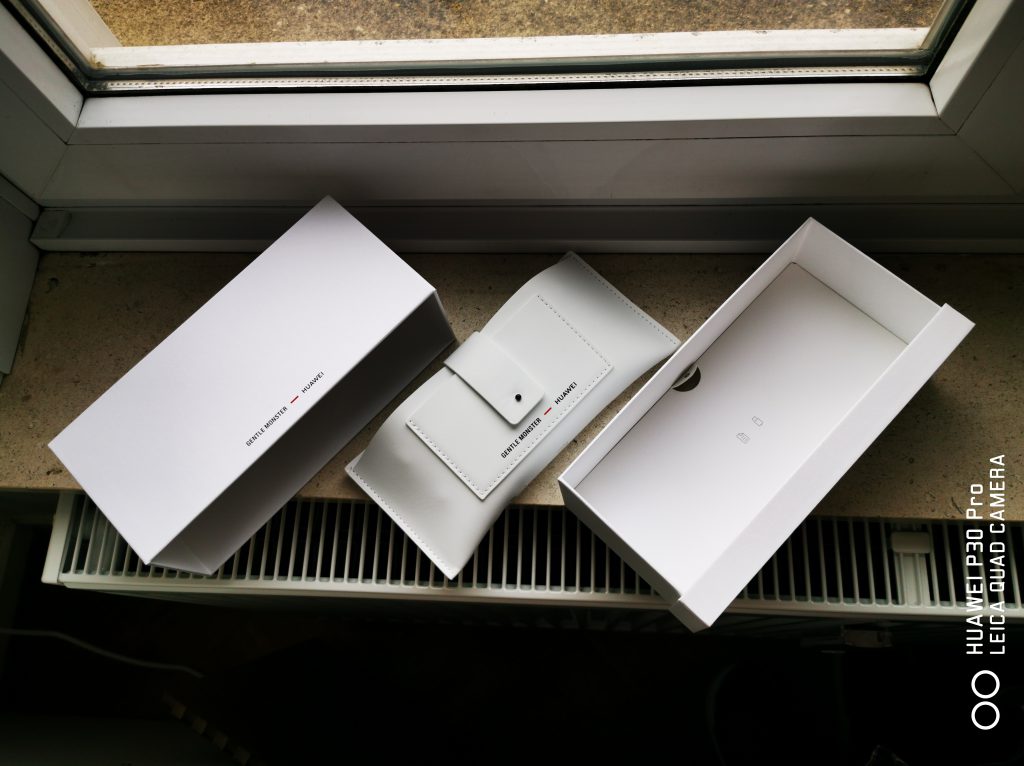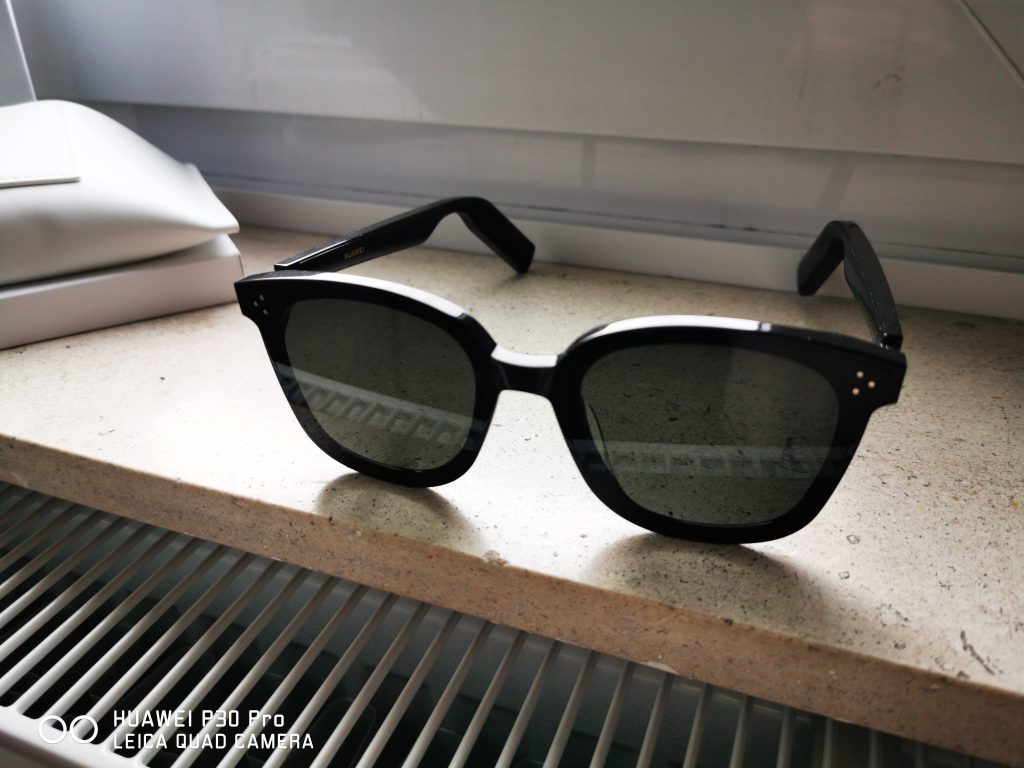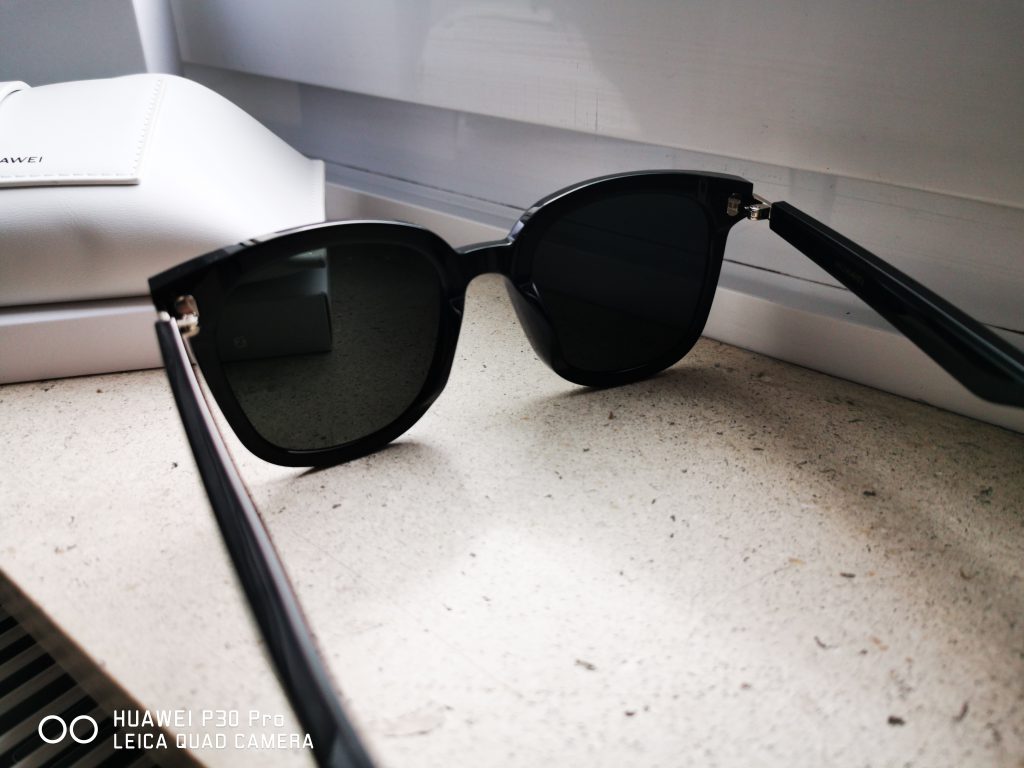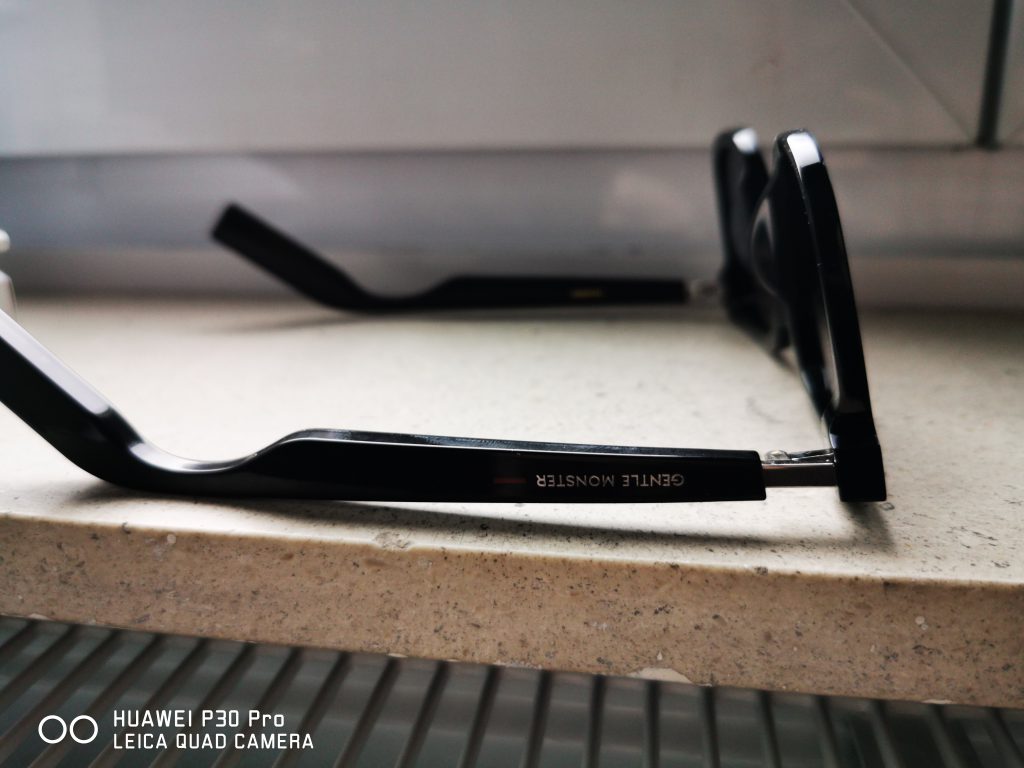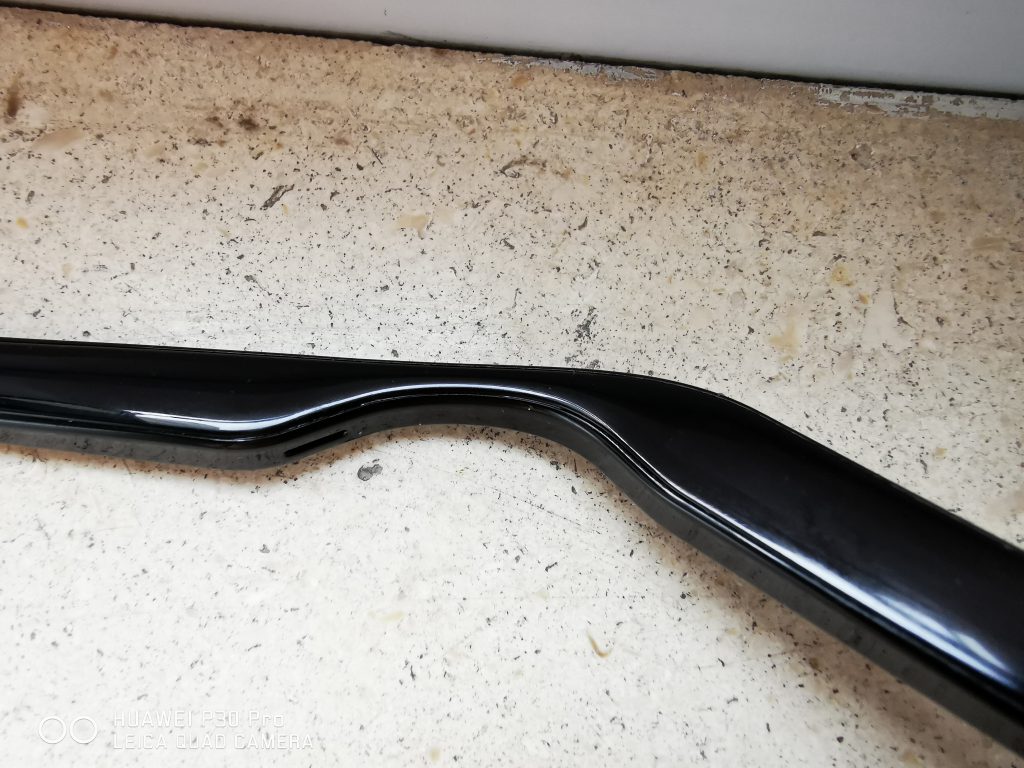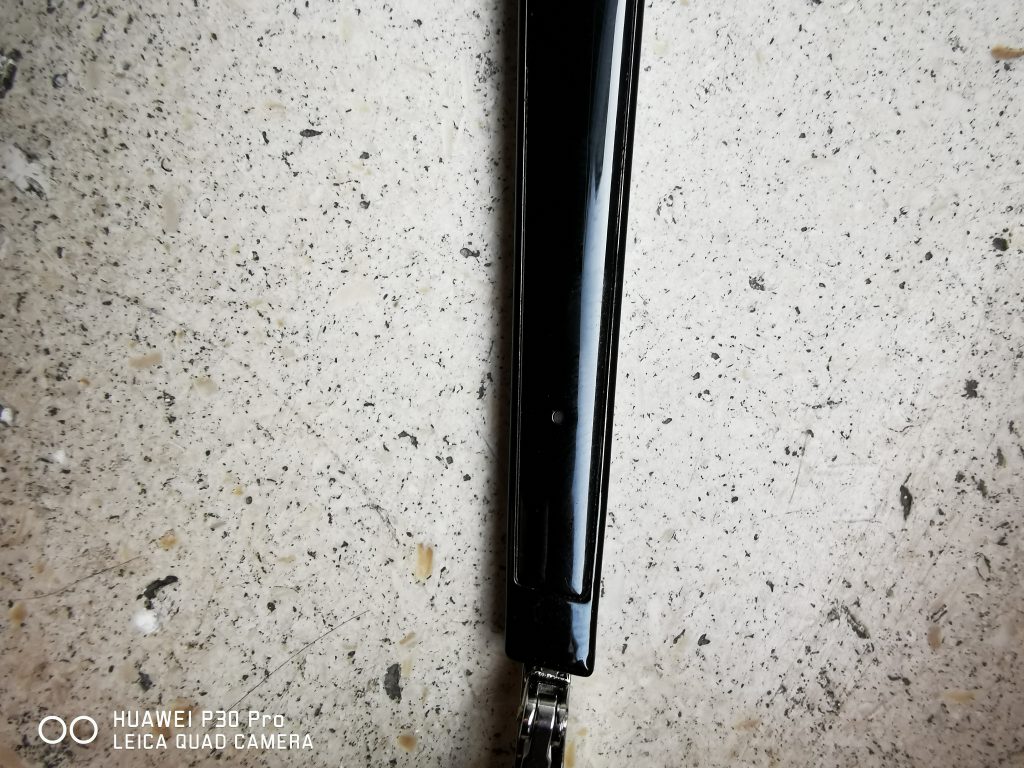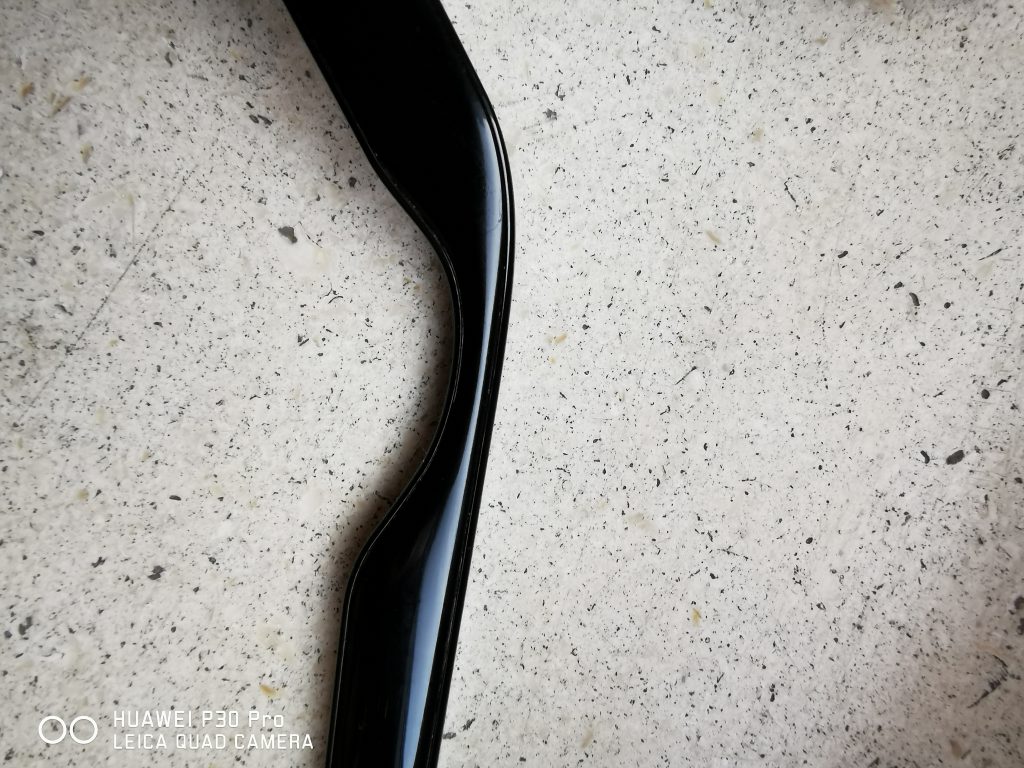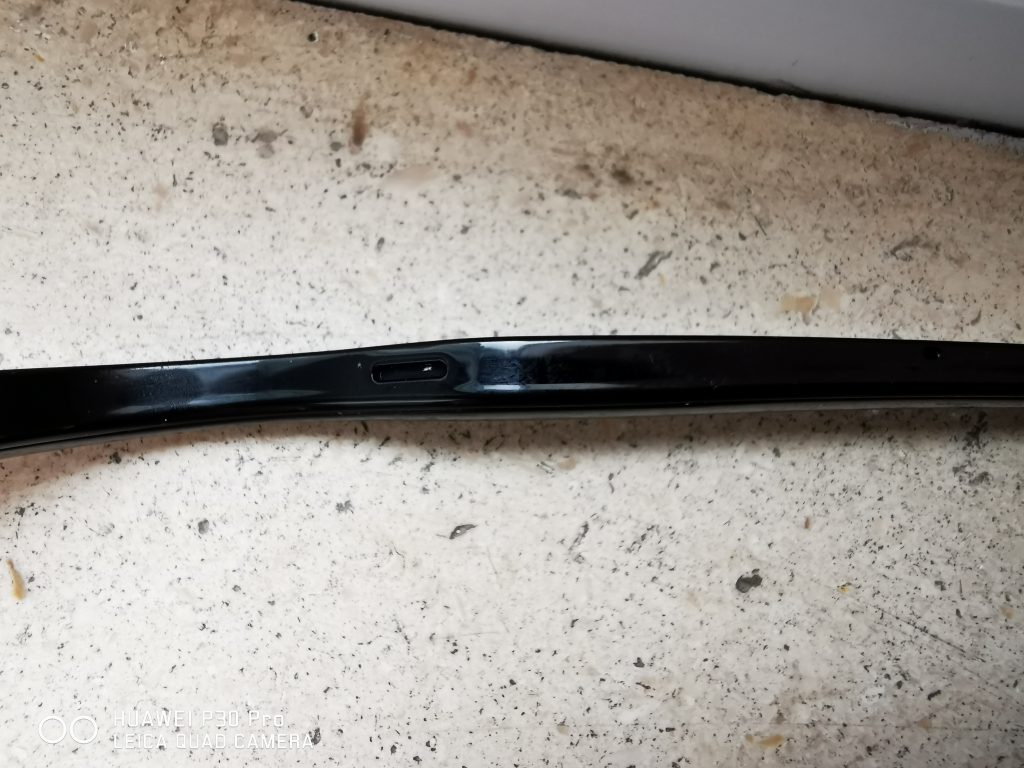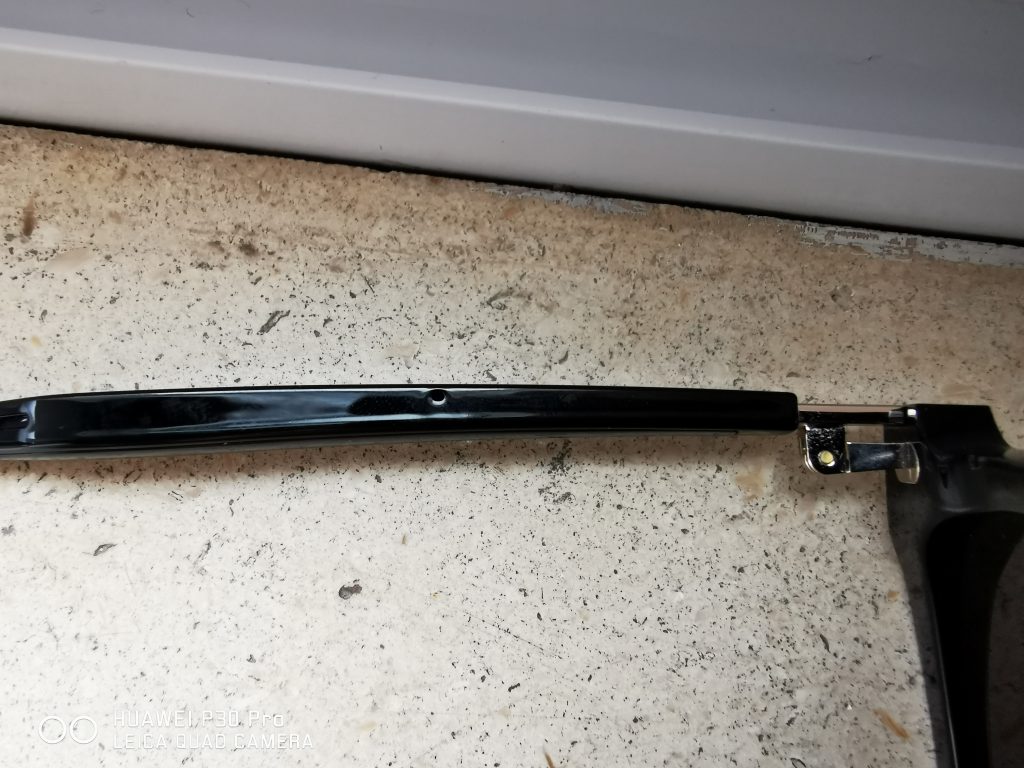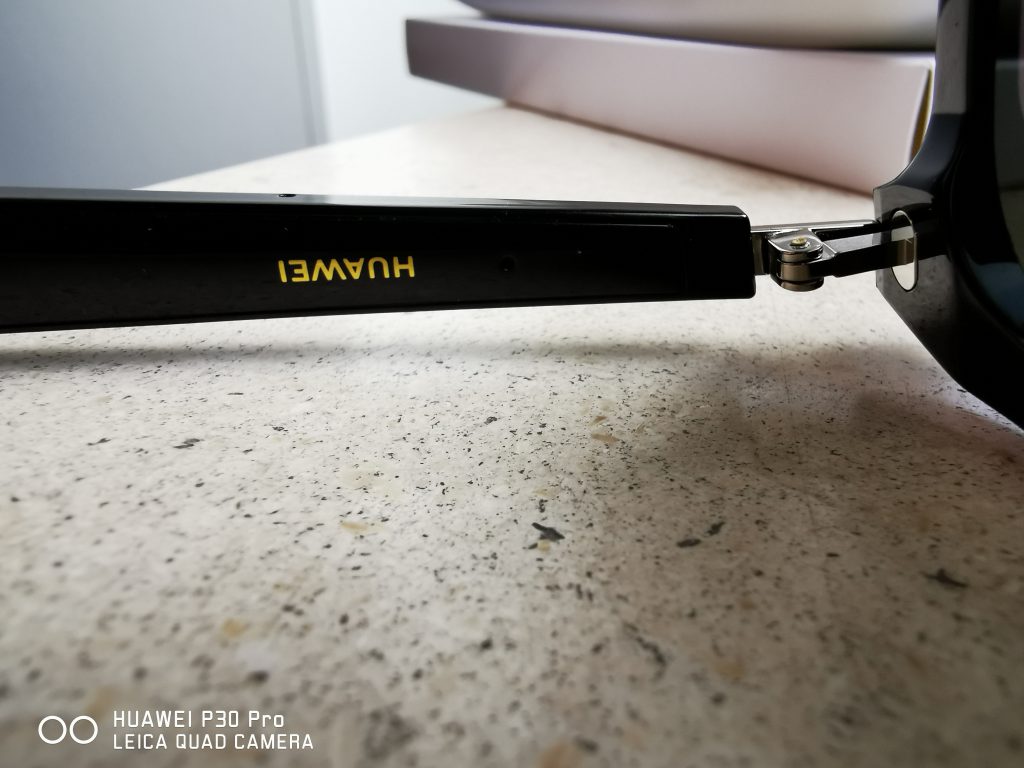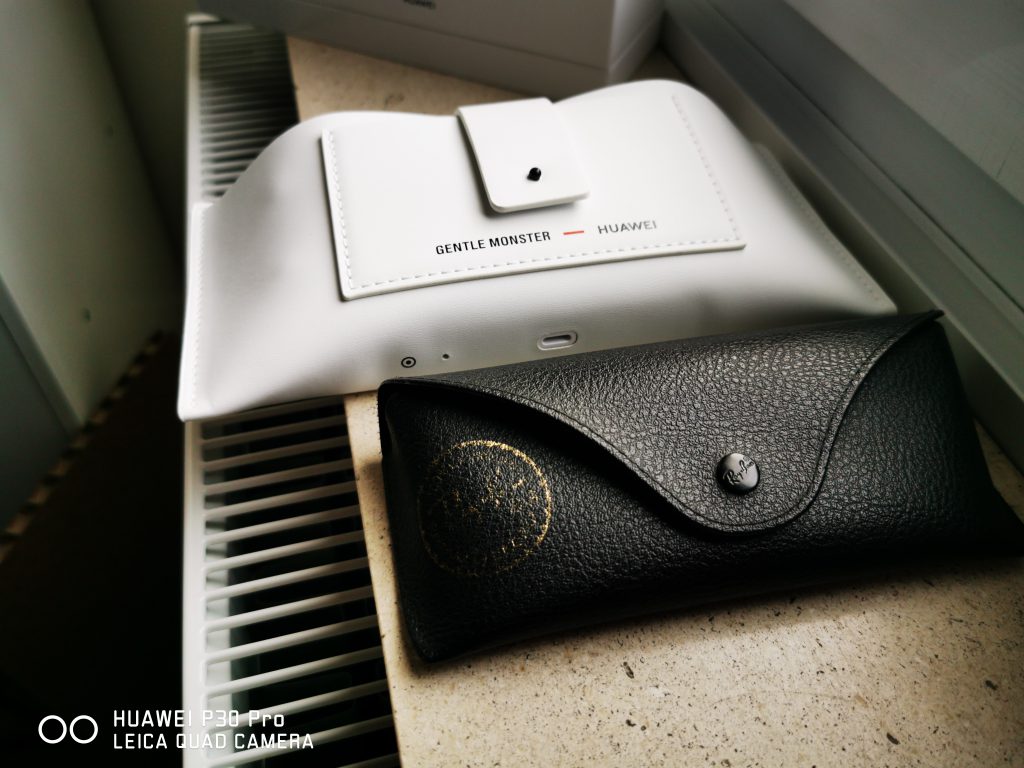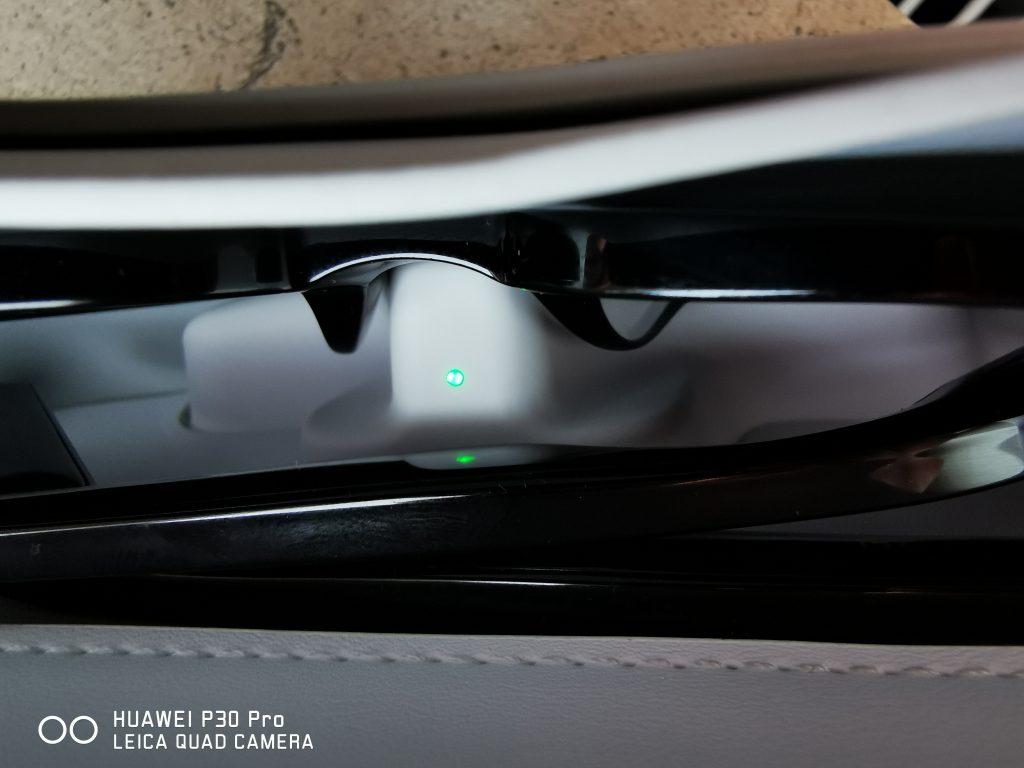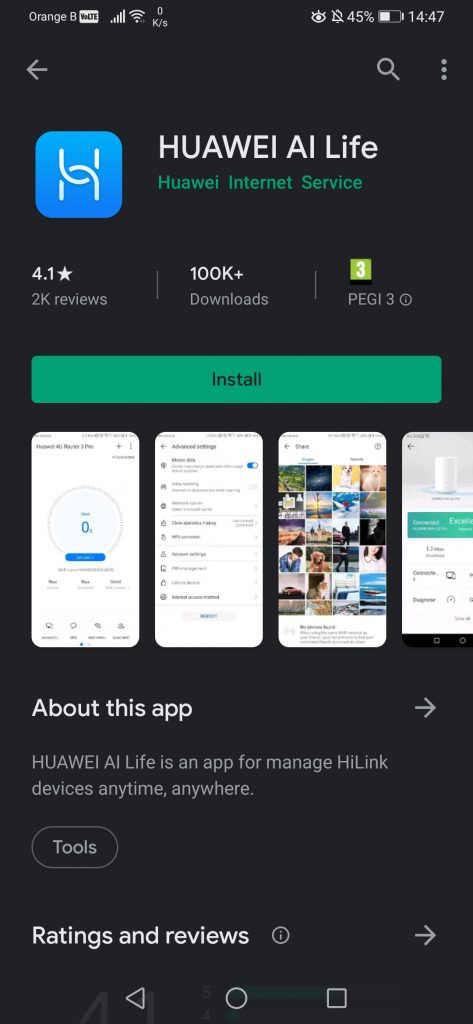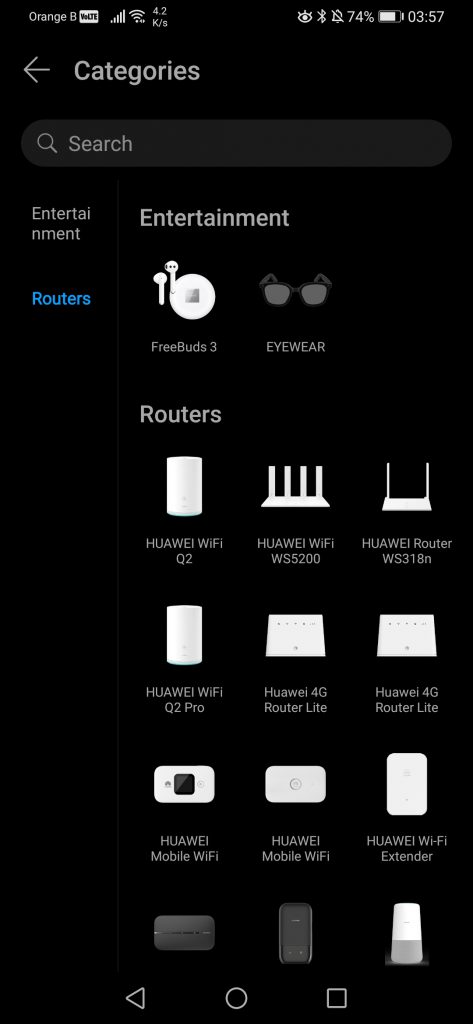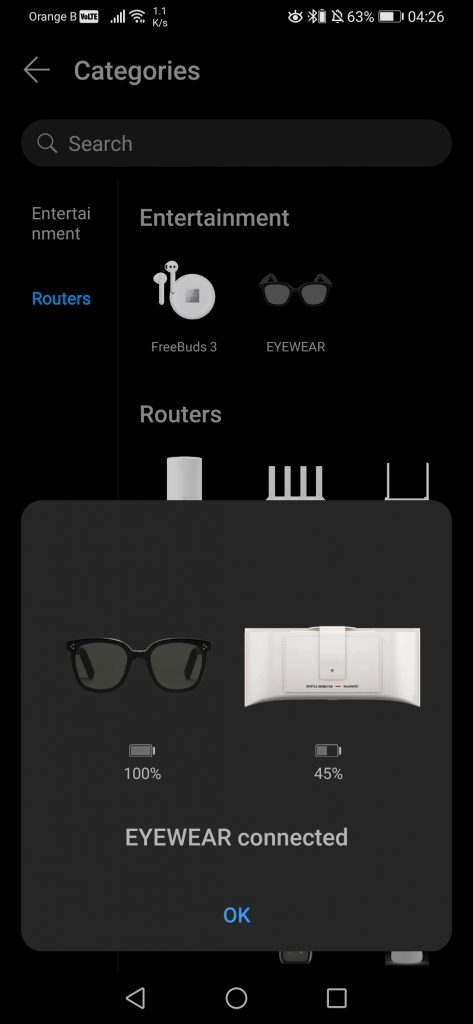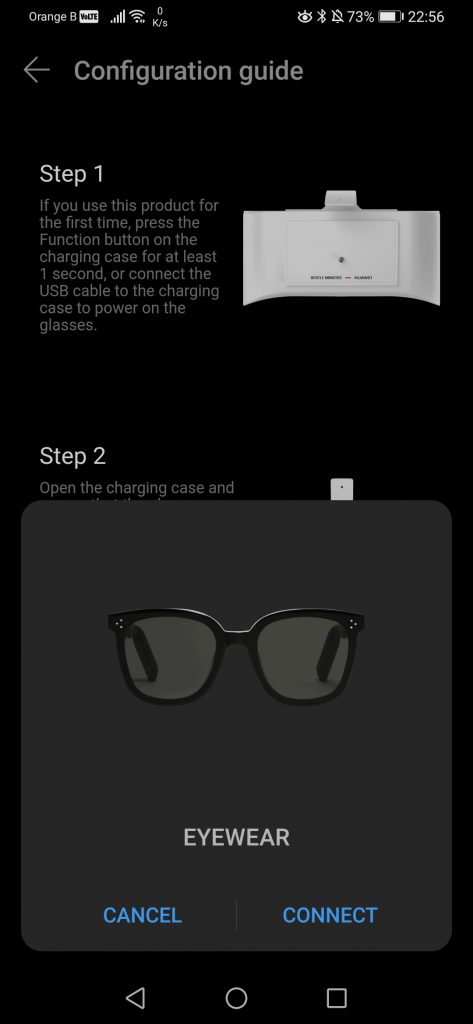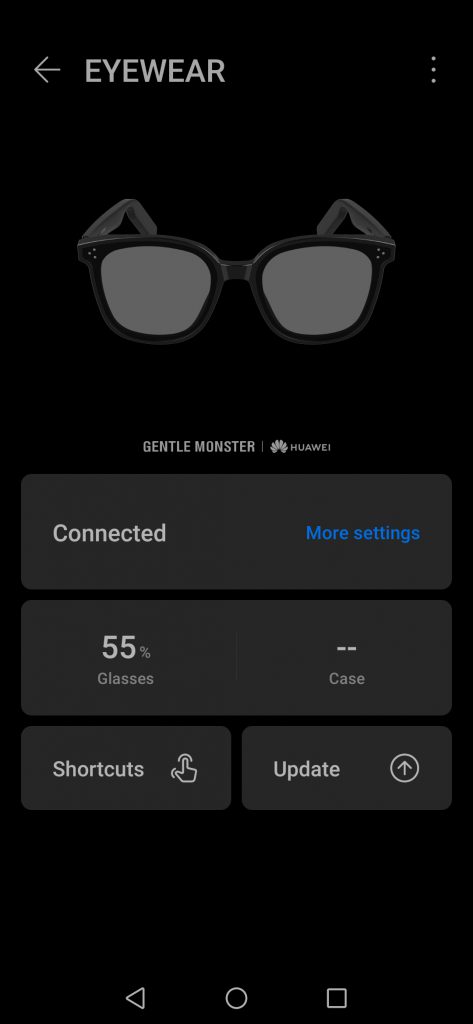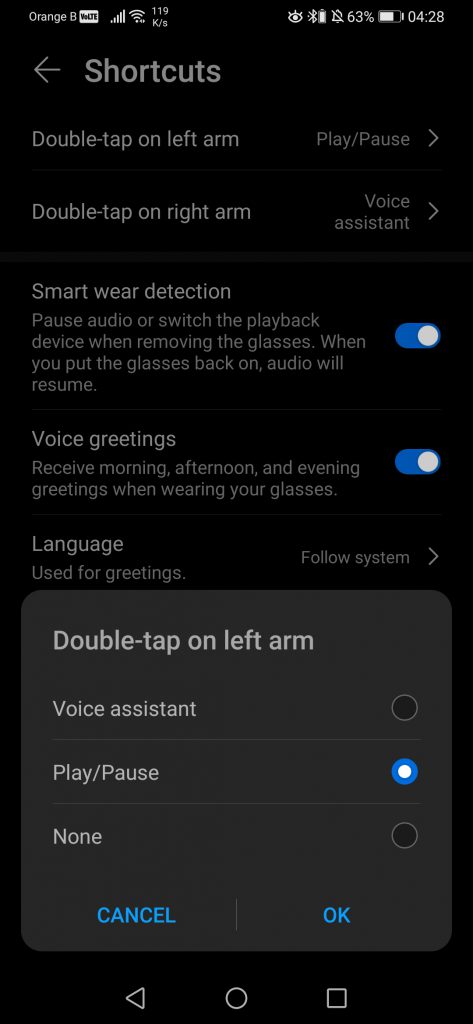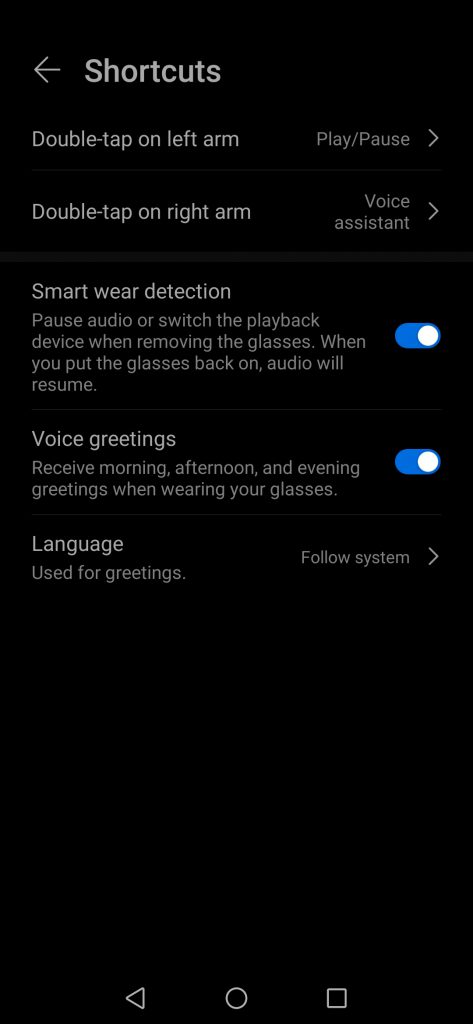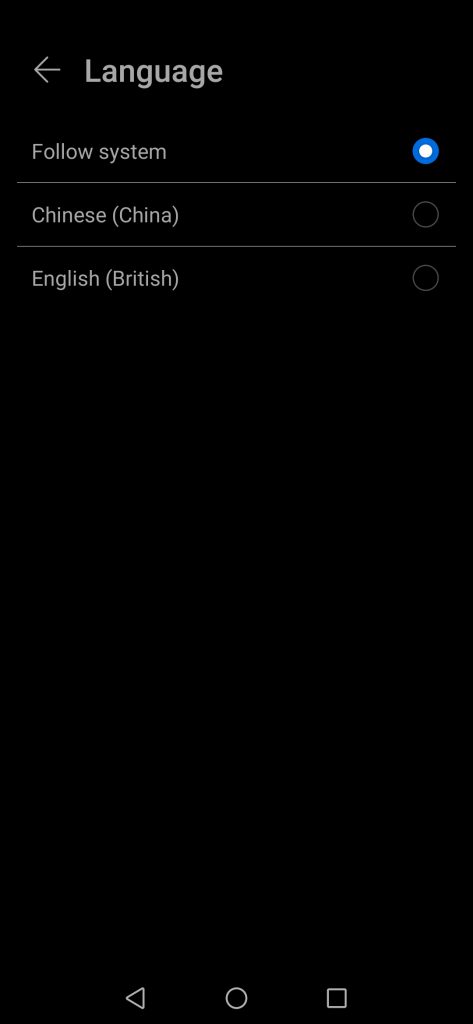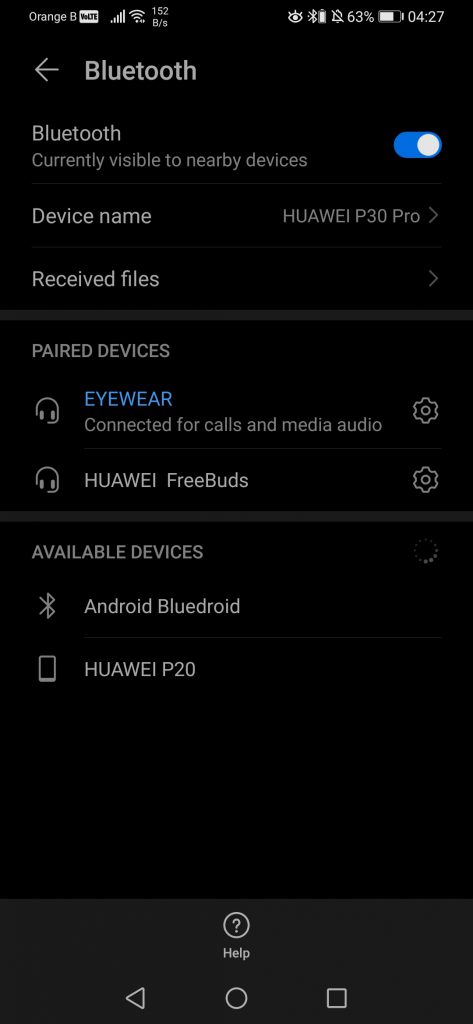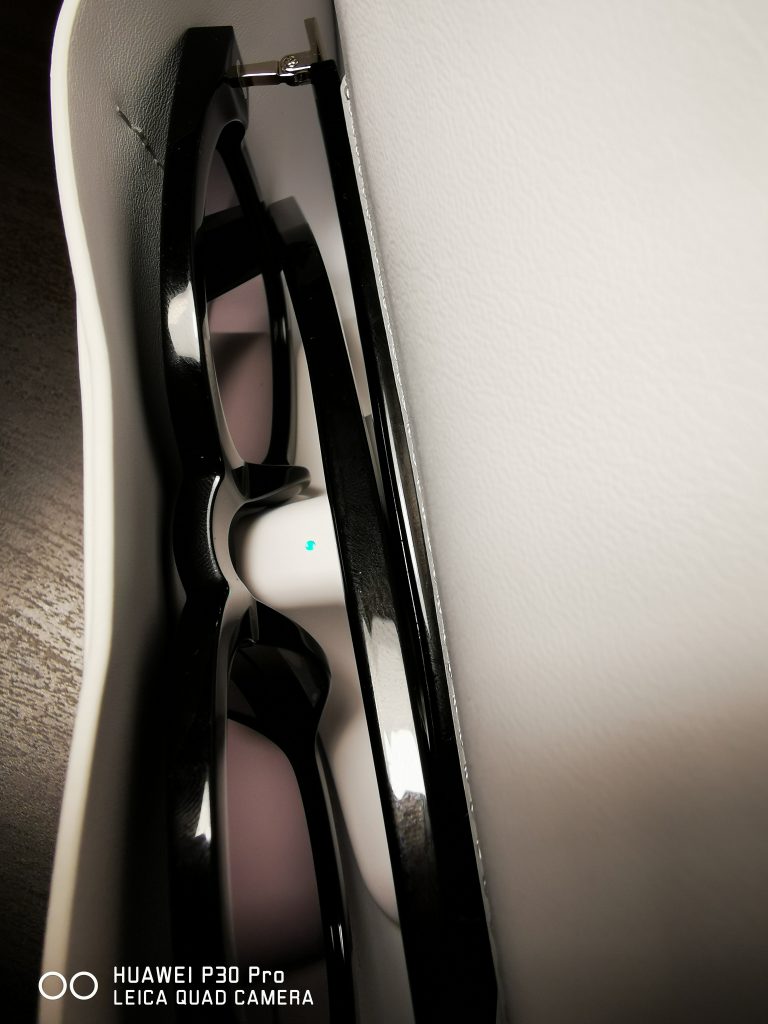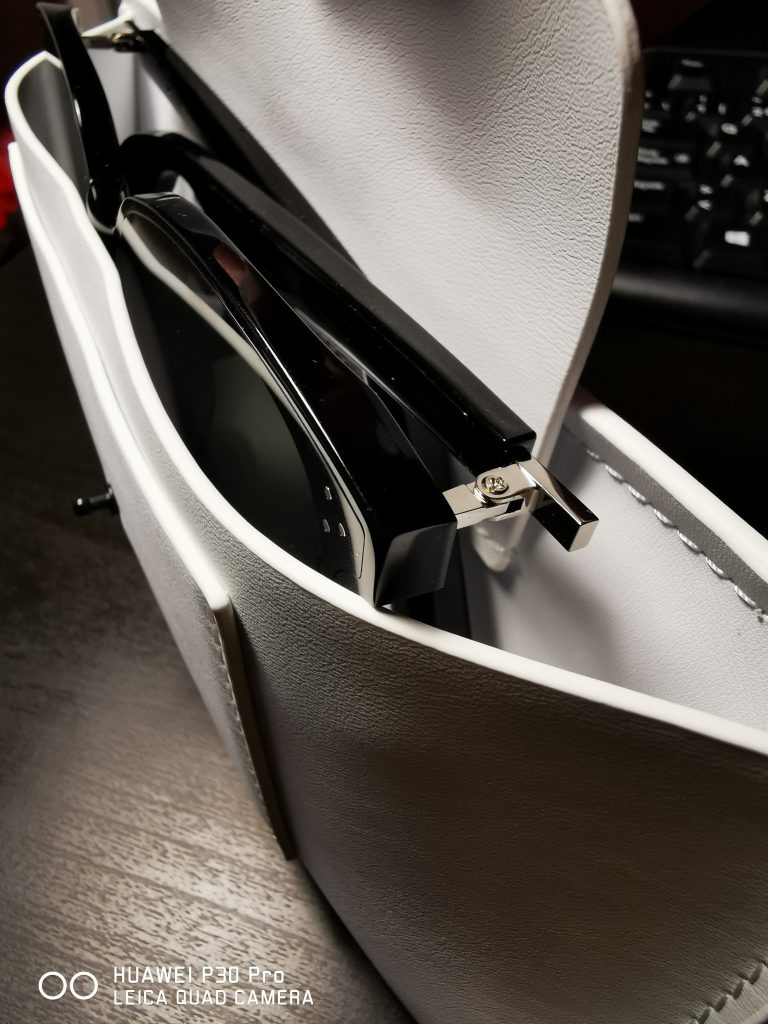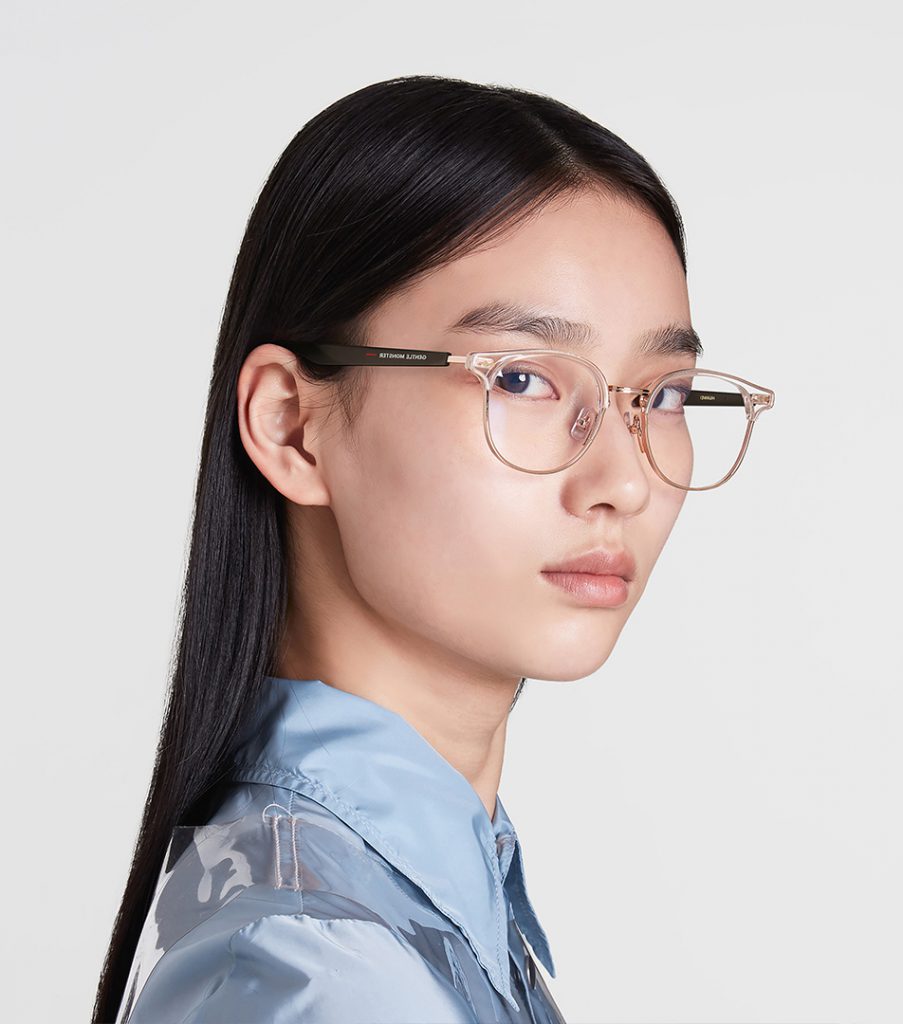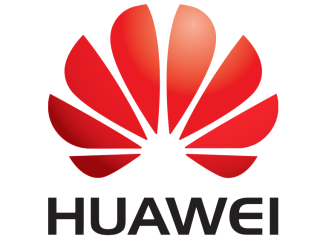
This is an in-depth overview of Huawei x Gentle Monster’s smart eyewear, finally available for purchase in Europe.
Artículo disponible en Español | Article disponible en Français
A month ago, Huawei’s smart eyewear, made in collaboration with South-Korean sunglasses brand Gentle Monster, was listed on Amazon in Europe. While we had initially said we wouldn’t be purchasing a pair to check them out, as Huawei would never sponsor us anyway, this was without counting on an interesting promotion. Indeed, this past 27th of November, the price of one of the two models dropped from 399€ to 280€ on Amazon.it, prompting us to order a pair.

The model we purchased is “Jackbye-01”, with the other model currently available being “Eastmoon-01”. Ironically, this order did not come without its share of problems, with the package being marked as delivered while we never received it, with us joking about how the sunglasses were so good that the delivery guy had decided to keep the package for himself. For this reason, you’ll see us joking about “Huawei x Gentle Monster smart glasses, 10/10 delivery guy would steal them again” even if we eventually received them… 4 days later. Still, this is better than nothing:
For the full specifications of these glasses, such as size or weight, we recommend you read our previous article on the matter. Now, before we continue, please be warned: this is not an in-depth review of the product. Instead, it is an in-depth overview, covering quality, pairing process and first impressions, as well as some general thoughts about the glasses. We will be publishing a much more detailed, in-depth review later on, once we have the opportunity to test all the functions and use the sunglasses in our daily lives over the next few weeks. We are not sponsored by Huawei either, as previously mentioned, and paid the 280€ out of our own pocket.
Let’s start by talking about the concept of smart glasses. While this idea has been around for years, with a few companies attempting to release a viable product on the market and ultimately failing, Huawei mentioned how they wanted to create a product people would actually wear and that looks like any other pair of glasses out there. The result is some kind of regular eyewear with smart features. And yes, let’s be honest directly: this is essentially like any other smart wear out there, such as smart watches. While this could be a negative or limiting factor from the point of view of some people, we believe the choice made by Huawei is right, as the technology for proper futuristic smart glasses is not yet there. After all, if we look at other attempts from mostly US-based companies, we only find failures. The most well-known examples are Snapchat’s horribly looking “Spectacles” and Google’s “Glass”.
If we start by Snapchat’s “Spectacles”, these look so ridiculous and worrying at the same time that we can question the sanity of its buyers, especially at the current price-point: the new version, the “Spectacles 3”, costs 370€, essentially 30€ less than Huawei x Gentle Monster’s attempt. While we understand the functions and goals are different, they both fall under the “smart glasses” category, which we can also divide in two sections: what can realistically be worn in public and what remains a gadget nobody in their right mind would wear. In this case, Snapchat’s fall in the second category:
Ironically, the main problem of Snapchat’s models are the cameras. As mentioned, the technology is clearly not yet there, although smartphone manufacturers are expected to place the front-facing cameras under the display in the near future (as soon as 2020), which could be Snapchat’s salvation in this case.
With Google’s “Glass”, we find a similar problem. While the idea was good, the end result is terrible. Google’s smart glasses look like the Chinese know-offs we can find for 2€ on AliExpress, and the distribution of the hardware seems curious. Huawei has taken a different approach, placing their hardware on both temples of their smart glasses, which is definitely a better way of doing this. For now, Google’s “Glass” cost 999$ (about 900€) and the company seems to be marketing it towards industry and services, meaning their target is different from Huawei’s:
Now that we are done essentially destroying the few competitors of this product, let’s actually start talking about it. The first thing we’ll notice is how bulky the box is. Opening it is quite nice, and whether this is the standard type of boxes used by Gentle Monster or another one of the boxes made by Huawei, it remains an interesting experience. After all, as we’ve mentioned in our Porsche Design Mate RS articles, the box remains an important part of the experience in premium products:
As soon as we open it, we can see a big protective case with the Gentle Monster x Huawei branding on it. Sadly, white is a colour that gets dirty very quickly, making darker cases more interesting. Under this one, we find the warranty booklet, a quick start guide, a safety information booklet and a cloth to clean the glasses. The box also includes a USB Type-C charging cable, but no charger. Since the charging case has a type-C port, this makes it easy to charge, as most owners of this product will likely have a high-end [Huawei] smartphone:
Now, the first impressions of the glasses are mixed. While the outside of the sunglasses has no defaults or any kind of visible joints, and one cannot tell these apart from other regular sunglasses, the same cannot be said about the inside part of the temples, which clearly shows where the plastic has been glued together. Of course, this is on the inside, so it doesn’t matter, but it’s still there regardless:
In terms of branding, it is what we can expect: on the outside, we find “Gentle Monster”, and on the inside, “Huawei”. Ironically, all this time, we thought the branding on the outside was “Huawei x Gentle Monster”, so it is a bit disappointing this is not the case, although the purpose seems clear: to make sure these look identical to regular sunglasses:
Now, as we can see on the following diagram, the sunglasses are packed with tech, meaning one has to be careful when handling these:

We can easily find the speakers near the ear area, as well as the microphones. We’ve counted 4 microphones: 3 on the right temple and 1 on the left temple. Two are inside, on the sides. We then have two more on the right, with one at the top and one at the bottom, as we can see in the following pictures:
As mentioned, the protective case is quite bulky. While it is understandable, as it packs a battery inside as well as charging circuits, it remains difficult to carry around. While women could get away with it by taking a bigger handbag, for men, it will be awkward, unless they go around with a backpack or some kind of handbag too. Here’s a comparison with the protective case of Ray-Ban’s Aviator:
On the bottom of the charging case, we find the type-C charging port, as well as an indicator for the charge. We also have a button which does a series of things:
- Pressing it for 8 seconds will reset the device to its original settings
- Pressing it for 1 second or longer will turn the glasses on
- Pressing it for 3-6 seconds will start the pairing process
Finally, inside the case, we can see the charging area. When the glasses are placed inside, we can see the led shine green, meaning they are making contact:
To turn the smart glasses on, it is possible to either put them to charge, or press the button on the bottom of the case for a second or longer. In theory, the glasses come with some charge, although putting them to charge directly isn’t a problem. For the pairing process, things are rather easy. While the quick start guide has a QR code to download an application, we recommend heading directly to Huawei’s AppGallery and get “AI Life”, or on Google’s Play Store “Huawei AI Life”. While the glasses are also compatible with iOS, not all the functions work on Apple. This application now handles all the new Huawei accessories, such as the FreeBuds 3 or the eyewear, as well as the routers of the company:
Once installed, both the Bluetooth and GPS have to be enabled. In the AI Life application, users need to navigate to the eyewear and tap on this one, which will bring up the pairing process. In theory, just opening the case the way the app asks is enough, with the smartphone immediately recognizing the product and pairing to it:
Of course, as with all these connected products, there’s always some software update. In our case, it just popped-up directly, offering the version 1.0.0.110, which is less than 1 MB in size and improves the Bluetooth connection and system compatibility. The update section is essentially the same as the updater we find on EMUI:
Once updated, we can see our product now connected, and have various settings to play with. For instance, in the “Shortcuts” section, we are able to set-up the way we want to use the product, such as the double-tap feature, language and a few other things:
Now that the product is paired, we can finally test it. The sunglasses are quite light to wear and comfortable, although we haven’t worn them for a long period of time. If anything, we would say they are appear to be lighter than regular Ray-Ban Aviator sunglasses, although a quick check proves us wrong, with the Jackbye-01 being the heaviest smart glasses model out of the five designs available, at 45.6 grams, while the Ray-Ban Aviator weight around 30 grams. This could be due to an overall better weight distribution, with, for instance, the batteries being located at the back of the ears.
As we’ve mentioned, these smart glasses allow us to do a few things such as listen to music, answer calls or use the Google Assistant. We’ve only tested the music feature for now, although, as we’ve mentioned, this is not a full review, but more a “short” overview. We’ll be testing everything more in depth over the next few weeks. For now, if we only talk about the music, the system works better than expected. One must be at least 2 centimetres or closer to hear anything when the volume is at 50% in a relatively quiet environment, so unless a close friend or partner (partner as in, boyfriend, etc) gets this close, it will be hard to hear anything.
As with the Huawei FreeBuds from 2018 (the ones we’ve tested here), the music automatically stops when we take the sunglasses off, although contrary to the FreeBuds, this one restarts automatically when putting the glasses back on. This feature also works consistently, unlike on the FreeBuds where it was hit or miss. The same can be said about the double-tapping, which is responsive and works each time, while on the first generation FreeBuds, one had to regularly insist and tap multiple times. Of course, one could say this is due to more area for the sensors, which is probably the reason why it works better.
The sound detection can be easily tricked too from what we’ve noticed. One can simply place their fingers next to the speakers, and the glasses will start playing music, thinking they are being worn. While this is not a problem overall, we just wanted to have a proper idea of when the music is too loud. It appears that 50% is that limit, with anything above it being perfectly hearable. Of course, in a noisier environment, such as the metro or a public location with a lot of people, we might be able to get away with increasing the sound a bit more, but 100% is definitely too loud.
Now, one issue we’ve faced is the audio delay. While this isn’t a problem when listening to music stored on the device, answering calls or using the assistant, it is a problem if we watch videos on YouTube and others. This delay is there and is rather annoying, especially taking in account that both the P30 Pro that we are using to test these smart glasses, and the eyewear itself, have Bluetooth 5.0, although it is better than between the 2018 FreeBuds that used Bluetooth 4.2 and 4.2 smartphones such as the P20 Pro or Mate RS.
We also have a few issues with the overall design of the product, which we are unsure whether they affect only our unit or if these are generalized problems with these glasses. Most of these can easily be solved or ignored, but they remain annoying nonetheless, especially taking in account the price of this piece of tech.
Let’s start with the case, which has various issues. Taking the sunglasses out of said case is quite difficult, due to the top protector that has been stitched at the same level the temples rest, meaning one of the temples goes under said protector, protector that has a bump of a few millimetres. This forces the user to apply some force or take the glasses out in a weird way, instead of just sliding them up. This design issue could be easily solved by, for example, stitching this protector a bit lower (roughly 0.5 to 1 centimetre lower), which would make the glasses rest on top of it and make it easier to slide them out:
Still with the case, putting the sunglasses back into it is also difficult, as the curved area starts too early, making the corners of the glasses rest on the border of the case, as we can see on the following picture. This seems to be a problem with the design of the case and not the glasses, and happens on both sides, with the exact same clearance area. We haven’t seen the other glasses, so we are unsure on whether this problem only affects this specific model or if it is a widespread issue:
Moving on to the glasses, on top of the interior assembly that we covered at the beginning of this article, we also noticed that the left side does not rest flat on a table, being a few millimetres higher. We’ve noticed the same issue on our Ray-Bans, on their right side, although these are quite old, so some deformation is expected with time. Whether this is wanted or accidental, we can’t tell. We thought we would point it out regardless. From pictures we’ve seen elsewhere, this does not seem to be a common issue:
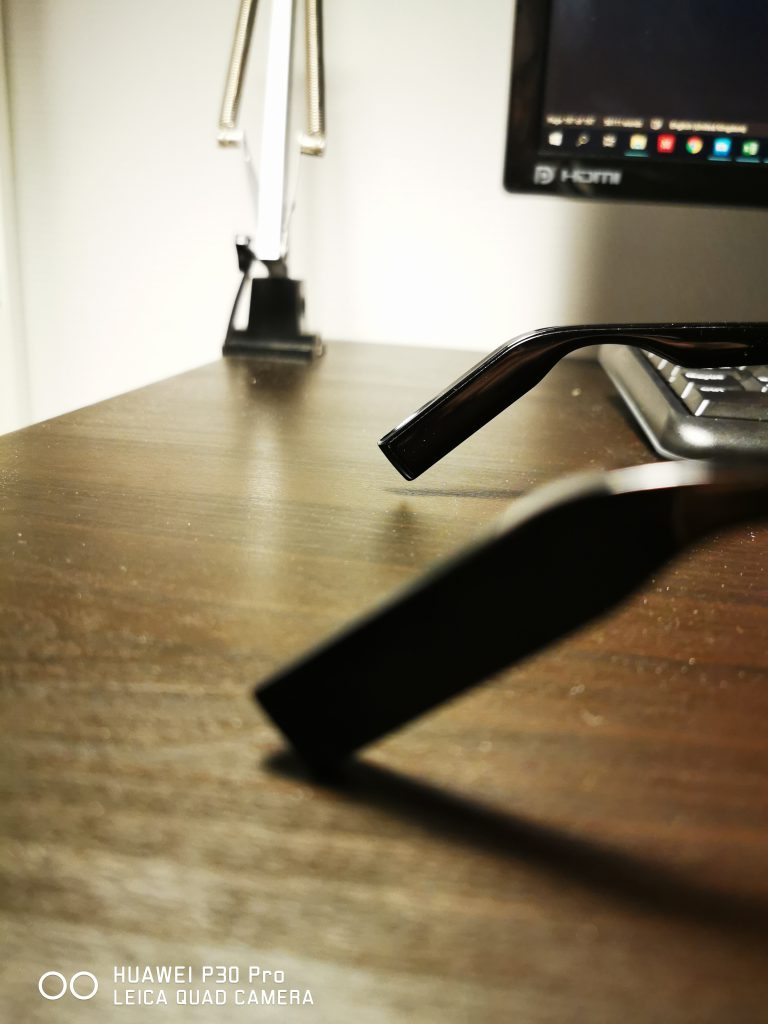
Finally, the left temple, again, is rather hard to open. While we’ve noticed exactly the same on our Ray-Bans, but on their right side (there seems to be some kind of pattern here), this can be easily solved by going to an optical shop and have this adjusted. Or maybe they’ll explain this is intended, who knows?
Our last issue is in terms of repairability. This is, again, an issue faced by many other modern products and, well, the industry at wide, with smartphones or accessories being glued together or being rated IP67/IP68, making it between difficult to impossible to repair without going through the manufacturer. For instance, this product has the same problem as the FreeBuds, meaning that it is always on standby, with the battery slowly draining, forcing the user to charge them regularly. Once the battery in the case and the glasses is used and the product stops working properly, it doesn’t seem to be possible to replace said battery due to the compact design of this piece of tech. Of course, for the case, it will be easy, one will be asked to buy a new one. But for the glasses? Do we have to just buy new ones every few years? Sure, we highly doubt the service centre will be able to open the temples and replace the battery without breaking them, but what is the alternative proposed by the company? A logical option might be swapping the temples altogether, by unscrewing them, meaning a user could potentially buy new ones through Huawei for, let’s say, about 65€ (the usual battery replacement cost at Huawei, at least here in Belgium), with the company then refurbishing the old temples.
Overall, our initial impressions of the Huawei x Gentle Monster sunglasses are quite positive. Yes, 10/10 the delivery guy would steal them again, but that’s not all. If anything, the major downside appears to be the current pricing and the limitation in choice. We are still hoping the company plans on releasing the other three regular models in Europe.
Pricing-wise, at 399€, it is difficult to recommend them. We’ve managed to find the same exact model, the Jackbye-01, on Gentle Monter’s website, which costs 249 USD, or roughly 225€. This means that the Huawei tech inside costs 174€, corresponding to the price of Huawei’s new Freebuds 3. If anything, if we had to make a comparison, the Huawei x Gentle Monster sunglasses are a combination of the regular model and the various parts of the FreeBuds, giving a similar experience. But for 280€, or even 300€, this becomes more reasonable, as we end up paying 60 to 80 euros as a “premium” for the smart parts, corresponding to the cheaper FreeBuds Lite.

More on this subject:
- Huawei’s smart eyewear, made in collaboration with Gentle Monster, is now available in Europe (8/11/2019)
- Huawei’s smart eyewear, made in collaboration with Gentle Monster, appears online, releasing next month (16/08/2019)
- Huawei FreeBuds (2018) long-term review (3/05/2019)
- Huawei announces collaboration with Gentle Monster for smart eyewear (15/04/2019)
